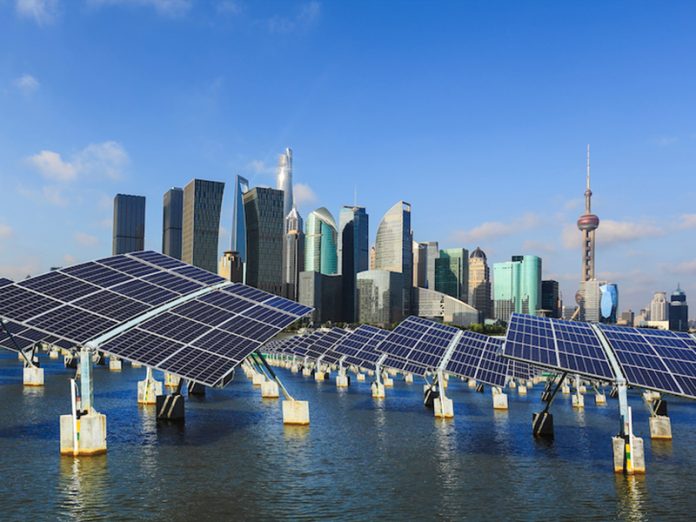Overview
China is the leading investor in renewable energy in the world. In 2019, as an example, the global renewable energy investment was 282 billion U.S. dollars, China investing 87 billion U.S. dollars. Over the last decade, China has become a world leader in solar and wind power, but can it reach its goal to be carbon neutral by 2060?
As solar energy differs in every one of China’s provinces, it is hard to track how renewable energy is distributed between businesses, households, agriculture, and transport. Some areas have higher degrees of using green energy in China. For example, Inner Mongolia’s industries and buildings use 30.1percent of solar power, as the population there isn’t quite significant.
Covid impact
Following the outbreak of this new coronavirus (COVID-19) and its severe social and economic effect, China has begun to stimulate its economy in a bid to recuperate. Provinces have announced their investment plans, in which brand new infrastructure has a vital role. This infrastructure will also profoundly influence China’s energy industry’s growth in the post-epidemic era.
With the slow resumption of production and work in China and the economic stimulus plan’s implementation, demand for power distribution and generation capacity is expected to rise. As estimated by the China Electricity Council, total electricity consumption in 2020 will boost 2-3% compared to 2019, even extended the first-quarter fall by 6.5%.
Meanwhile, China has kept its 2020 low-carbon target for the energy industry, to generate 15 percent of its energy mix from fresh (non-fossil fuel) sources.
Ensuring that the future increase in energy infrastructure and energy generation comes from new sources will help stimulate the economy while maintaining the green development pathway crucial to addressing climate change. In reality, renewable energy can do more jobs and support more economic growth in the long-term.
But, effectively getting renewable energy from the electric grid’s origin remains a challenge. Addressing this challenge will help guarantee a more robust, cleaner economic recovery for China.
Ecological and geopolitical reasons have caused China’s leadership in renewable energy.
Aside from domestic factors, there are two other reasons why the international community should react favorably to China’s leadership sector. The first is environmental: China’s stated environmental objectives of growing renewable energy are relatively uncontroversial and widely endorsed for its positive externality. Its investments in technology and installation will bring.
This is because there’s mostly a global consensus on the need to decrease greenhouse gas emissions to mitigate climate change. Pew surveys done in 2015 across 40 countries recognize climate change as the top worldwide hazard, 32 with 79 percent of respondents stating that their countries should restrict greenhouse gas emissions as part of an international agreement. Since the world’s leading emitter of greenhouse gases, China’s transition to renewable energy electricity production and consumption is essential to its global commitment to peak carbon dioxide emissions by 2030
The next explanation is tactical: by raising the proportion of renewable resources in its energy mix for energy consumption, China can mitigate environmental anxieties by making the country less reliant on unstable regions for energy security. An energy market determined by fossil fuels relies on securing oil and gas transport routes to and from fossil fuel-rich countries, requiring extended army security. The protection of oil transit points was one reason China assembled its first overseas naval base in Djibouti last year. In contrast, access to resources such as wind and sunlight for renewable energy far outstrips fossil fuels and is more evenly spread across different nations.
China’s top positions in renewable energy will benefit all geopolitics in several ways. Firstly, China will remain with one less excuse to expand its regional military existence for the sake of energy safety as it raises the share of domestically-produced renewable energy in its energy mix. Secondly, as renewable energy use diffuses globally as an externality from China’s development of the sector, more nations will become energy producers and hence be less reliant on unstable areas such as MENA and Russia for conventional fossil fuels.
China’s foreign exchange environment for renewable energy is growing.
While China is a pioneer in renewable energy market growth, its openness to foreign investments in importing alien renewable technology is ambiguous. Last year, Ernst & Young advisers ranked China as the world’s second-most attractive nation for renewable energy investments, supporting the United States.
In reality, however, it isn’t easy to assess China’s openness to foreign investment into the industry. U.S. renewable energy firms investing in China worry about intellectual land being appropriated without fair compensation, the loss of monetary control, and national security. These are valid dangers to consider when exporting in China, but at the same time, the evidence is anecdotal and therefore hard to substantiate or to curtail.
What’s more certain is that China’s technological improvements in the sector are changing foreign businesses’ incentives to invest in the nation. The change takes place in 2 ways: the first is that other countries may be left behind technologically if they don’t associate with China in creating renewable energy. For instance, take solar energy: China has been putting the gap with western nations in developing key elements of solar panels in recent years. Trina is a Chinese firm and the biggest solar panel manufacturer globally. As China becomes one of the world’s leading developers of renewable technologies, the strategic benefits of investing in the Chinese market and cooperating with the local Chinese in development and research might outweigh possible technology thefts’ costs and hazards.
China’s improvements in renewable energy are also changing the nature of international investment going into the sector. The country currently depends on bank loans and corporate bonds for financing renewable energy projects, which doesn’t necessarily lead to high-quality outcomes. This is only because these traditional financing techniques are more accessible to state-owned enterprises (SOE) and place private companies –usually more funds efficient compared to their counterparts — at a disadvantage. Hence, private Chinese firms need more funds and need access to more funding channels.
Innovative financing models like using pension funds, crowd-funding, and direct leasing have already been successfully implemented by renewable energy businesses and financiers in the United States. China needs these financing alternatives initiated and applied in the West, which is why the Chinese government was trying to entice foreign financiers to employ these renewable energy investment techniques through bilateral platforms like the U.S.-China Renewable Energy Partnership.
The U.S. Department of Energy and China’s NEA participates in the partnership to ease cross-border dialogue between businesses. Another group involved in the league is the American Council on Renewable Energy, a trade association of different multinationals and investment banks that possess the essential funding and innovative financing techniques to invest in high-quality renewable energy projects. The development of China’s renewable technology and foreign investment demands presents a substantial opportunity for the country to lead the sector by cooperating with overseas investors with much more innovative financing approaches to execute in its increasingly sophisticated market.


































